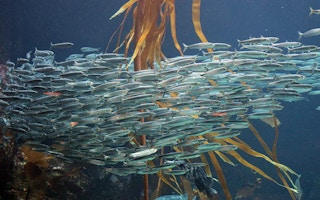An ambitious treaty designed to protect the high seas from overexploitation has hit the rocks.
To continue reading, subscribe to Eco‑Business.
There's something for everyone. We offer a range of subscription plans.
- Access our stories and receive our Insights Weekly newsletter with the free EB Member plan.
- Unlock unlimited access to our content and archive with EB Circle.
- Publish your content with EB Premium.
Negotiations for the United Nations High Seas Treaty rumbled on for two weeks and concluded last Friday, but an agreement eluded world leaders who failed to agree on a range of issues, including how much financial support developing countries should expect from wealthy countries to protect the open ocean.
The deal, which has been in the works for more than a decade, would have created a legal mechanism for managing two-thirds of the ocean that lies beyond territorial limits. This area, known as the high seas, is loosely unregulated and threatened by overfishing, pollution and seabed mining, which could proceed on an industrial scale by next year.
The health of marine ecosystems is crucial for the livelihoods for more than three billion people, and for limiting global warming. But only one per cent of international waters are protected. Part of the treaty sought to conserve 30 per cent of the ocean in marine protected areas (MPAs) by 2030, the timeframe scientists believe is needed to enable marine life to recover from decades of overexploitation and the oceans to buffer against climate change.
The treaty also tabled the introduction of environmental impact assessments (EIAs) for development in the high seas, for instance for mining the ocean floor for transition minerals, and rules for sharing marine genetic resources.
Environmental groups were frustrated by the deadlock.
“
The problem with the treaty and negotiations, is that they threw too many topics into the mix, all with different stakeholders, almost doing so knowing it would fail.
Doug Woodring, founder, Ocean Recovery Alliance
Laura Meller, an advisor for Greenpeace’s Protect the Oceans campaign, said the High Ambition Coalition, a group of countries that had committed to push a deal through, had not shown enough ambition.
“They promised a treaty in 2022, and time has all but run out. They shouldn’t shoulder all responsibility, other countries have been deliberately obstructive, but failure to deliver a treaty jeopardises the livelihoods and food security of billions of people around the world,” she said.
Sian Owen, director of the Deep Sea Conservation Coalition, a campaign group that opposes deep-sea mining, said the stalled treaty did not amount to failure.
“Failure would have been a weak treaty that made too many compromises,” she told Eco-Business. “States are holding out for a meaningful agreement that will set a solid framework to protect the ocean and its services for generations to come.”
“We were hoping, for example, for an agreement on how MPAs would be established on the high seas, but we are not there yet,” she said.
“Similarly, it is not yet clear what kind of financial support developing countries can expect from the developed world, or exactly how the potential benefits from the exploitation of marine genetic resources might be fairly accessed and shared.”
Doug Woodring, founder of Ocean Recovery Alliance, an NGO, said that the treaty was problematic because it attempted to tackle too many issues at once.
The original intention of the treaty was to address overfishing, but after years of wrangling other issues such as protecting the Arctic and managing the impacts of deep-sea mining were added to the negotiating table, muddying the waters for policymakers, he said.
Separate deals should be hammered out for different issues, he argued.
“Deep-sea mining is not a good thing. But it won’t happen imminently, because it is expensive, risky and regulations have not been ironed out yet. However, fishing is out of control now. Different regulatory tools are needed,” he told Eco-Business.
Woodring noted that Asia was the most significant region involved in the treaty, mainly because of its high and increasing consumption of seafood.
“Most of the region’s local waters have been fished out, and now the high seas are being fished with much bigger, unchecked fleets. This is totally unsustainable,” he said.
“We need to give the high seas, on which so much of humanity depends, the chance to recover.”
Between 10 and 15 per cent of marine species are at risk of extinction, according to a study by the National Oceanic and Atmospheric Administration published earlier this year.
Negotiations for the high seas treaty are to resume at a date to be decided by the UN.










